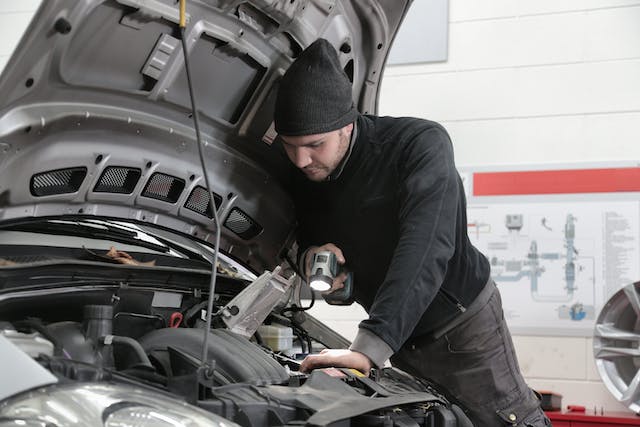In 1942, as researchers involved in the Manhattan Project were preparing an atomic bomb for use in World War II, they began to discuss the use of nuclear power for use in aircraft. Despite all of the advances in airplane technology, researchers believed that limits on payload size and distances made a strong argument for using a nuclear powered engine that would allow for an unlimited range.
A study in 1946 at John Hopkins University’s Applied Physics Laboratory concluded that the effects of radiation on materials used in such a plane needed testing and the potential release of radioactive fission byproducts during normal operation or an accident precluded the technologies deployment at the time, but research went on.
In 1948, the “Aircraft Nuclear Propulsion” (ANP) program was created with the goal of developing a full scale aircraft reactor and engine system. In 1948, a study group at MIT known as the Lexington Project, concluded: “nuclear aircraft (manned) were likely less difficult than nuclear ramjets, which, in turn, would be less difficult than nuclear rockets to develop.”
In 1950, B.C. Briant, Director of the ANP project described that the attempt to build a manned nuclear aircraft “posed the most difficult engineering development job yet attempted in the 20th century.”
Organizational Issues
Part of the problem was that the project was divided into two parts: development of the turbojet and development of the reactor.
General Electric was tasked with developing a direct-cycle turbojet, in which air entered through the compressor stage through a plenum and was then directed at the reactor core. The air would act as a coolant and then be rapidly heated and travel through the core, then through another plenum, and finally through the turbojet turbine and out the tailpipe.
Pratt & Whitney Aircraft developed the indirect-cycle turbojet which was the same except that air did not pass through the reactor but through a heat exchanger in which heat generated was transferred to a fluid, such as liquid metal, or highly pressurized water.
Briant’s team also looked at a dual-reactor system and the combination nuclear-chemical combustion system. In the end, the team settled on the direct-cycle turbojet which eliminated the need to deal with liquid metal.
In 1952, the National Test Aircraft (NTA) program was started with the goal of producing two aircraft powered by atomic energy. In the eight years from 1952 to 1960, the program transformed the B-36, the largest and strongest airframe capable of carrying the nuclear plant, engine and shield weight, into a flight test reactor. Called the Convair NB-36H,engineers incorporated shielding around the reactor, a 12 ton lead and rubber shielded compartment for the crew and “water jackets” in the fuselage between the crew and the reactor to absorb radiation.
In 1953, Secretary of Defense Charles Wilson canceled the ANP program but it was restarted again in October 1954, The US spent the next six years waffling about the program. By 1960, Kenneth Gantz wrote, “The taming of the atom, coupled with the technological advances in aerodynamic and structural efficiencies achieved over the past several decades, now brings atomic-powered aircraft and missiles within our grasp.”
However, in March 1961 the program was canceled again, this time for good, when the military declared the project unlikely to produce a useful military application. Shortly after, in May 1961, President Kennedy spoke before a special joint session of Congress and set they new goal of “catching up and overtaking” the Soviet Union in the “Space Race.”
The Future of Atomic Powered Aircraft
With a well documented desire to travel to Mars and beyond, humans will need to pick up the pieces of this canceled project and use what has been learned from nuclear submarines and reactors in the intervening half century.
We will look at plans for such a system in a future article on IndustryTap. Stay tuned!
Related articles on IndustryTap:
- Boeing Building Three New 747-8 Aircraft to Serve as the Next Air Force One
- NASA Tests Shape-Changing Aircraft Flaps
- Boeing Has Great Quarter… Aircraft Demand On the Rise
References and related content:







